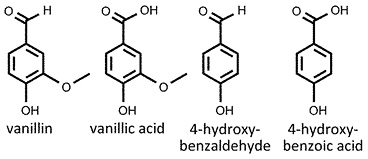 Vanilla planifolia
Vanilla planifolia
vanilla
Back to “Spices: vanilla (Vanilla planifolia)fr”
Vanilla planifolia Andr. (Orchidaceae); vanielje (Afrikaans); vanille (French); Echte Vanille (German); vaniglia (Italian); vainilla (Spanish)
DESCRIPTION The near-ripe and elaborately cured fruits (“vanilla beans”) are black, frosted with white crystals and have the typical flavour and aroma of vanilla.
THE PLANT An epiphytic plant with long climbing stems, fleshy leaves, attractive greenish yellow orchid flowers and long, thin and smooth fruits with thousands of small seeds.
ORIGIN Indigenous to tropical America (mainly Mexico).1 The Aztecs, but originally Mexicans of Vera Cruz, used vanilla (tlilxochitl) to flavour cacao drinks.1,2 A Mexican monopoly was broken when plantations were established on Réunion and Madagascar by the French and on Java by the Dutch.1,2 Today, vanilla is also cultivated in other tropical regions, including the West Indies, Central America and Indonesia.
CULTIVATION Plants grow from cuttings and require moist, tropical conditions. The flowers are pollinated by hand when they open in the morning to ensure proper fruit set.1,2 In nature this task is performed by hummingbirds or bumblebees.
HARVESTING The near-ripe fruits or beans are hand-picked, treated with steam or boiling water to kill the cells, heated in the sun and then “fermented” (enzymatically oxidated) overnight under cover. The heating and fermenting steps are repeated for several weeks to ensure maximum flavour development and quality.1,3
CULINARY USES Whole fruits are an expensive but important flavourant for chocolate, ice cream, custards, milkshakes, puddings, various sweet dishes, confectionery, sweets, sugar, preserved fruits, soft drinks and liqueurs.3 The whole vanilla bean can be added to the dish and removed again for future use. It is often split lengthwise and the soft, aromatic pulp scraped out. The presence of minute black seeds in a homemade ice cream is therefore a sign of quality and authenticity.
FLAVOUR COMPOUNDS The major flavour compound is vanillin (4-hydroxy-3-methoxybenzaldehyde), present in the cured fruits at a level of about 3%.4,5 The green fruits contain vanillin-glycoside as a non-volatile flavour precursor, which is enzymatically hydrolysed to glucose and vanillin during the curing process, so that the vanillin becomes visible as small white crystals on the surface of cured fruits. There are numerous minor compounds, including vanillic acid, 4-hydroxybenzaldehyde, 4-hydroxybenzoic acid and vanilla vitispirane, all contributing to some extent to the flavour and aroma.4,5 Synthetic vanillin, produced through semi-synthesis from eugenol (or wood pulp), is a cheap substitute for real vanillin because it lacks the chemical complexity of the natural product.

NOTES Vanillin and related compounds occur in other natural products, such as African white ginger (powdered tubers of Mondia whitei) and most famously, oak-aged wine. Seeds of the tonka bean (Dipteryx odorata) have a spicy aroma similar to vanilla and almonds and have become an alternative to vanilla for flavouring ice cream, custard and other milk-based desserts.
1. Mabberley, D.J. 2008. Mabberley’s plant-book (3rd ed.). Cambridge University Press, Cambridge.
2. Kiple, K.F., Ornelas, K.C. (Eds). 2000. The Cambridge world history of food. Cambridge University Press, Cambridge.
3. Larousse. 1999. The concise Larousse gastronomique. Hamlyn, London.
4. Pérez-Silva, A., Odoux, E., Brat, P. et al. 2006. GC–MS and GC–olfactometry analysis of aroma compounds in a representative organic aroma extract from cured vanilla (Vanilla planifolia G. Jackson) beans. Food Chemistry 99: 728–735.
5. Schulte-Elte, K.H., Gautschi, F., Renold, W., et al. 1978. Vitispiranes, important constituents of vanilla aroma. Helvetica Chimica Acta 61: 1125−1133.